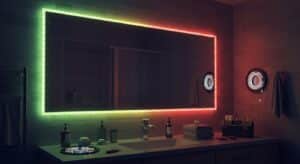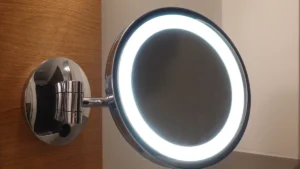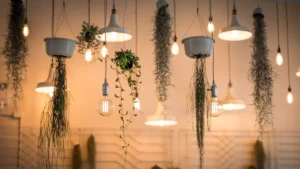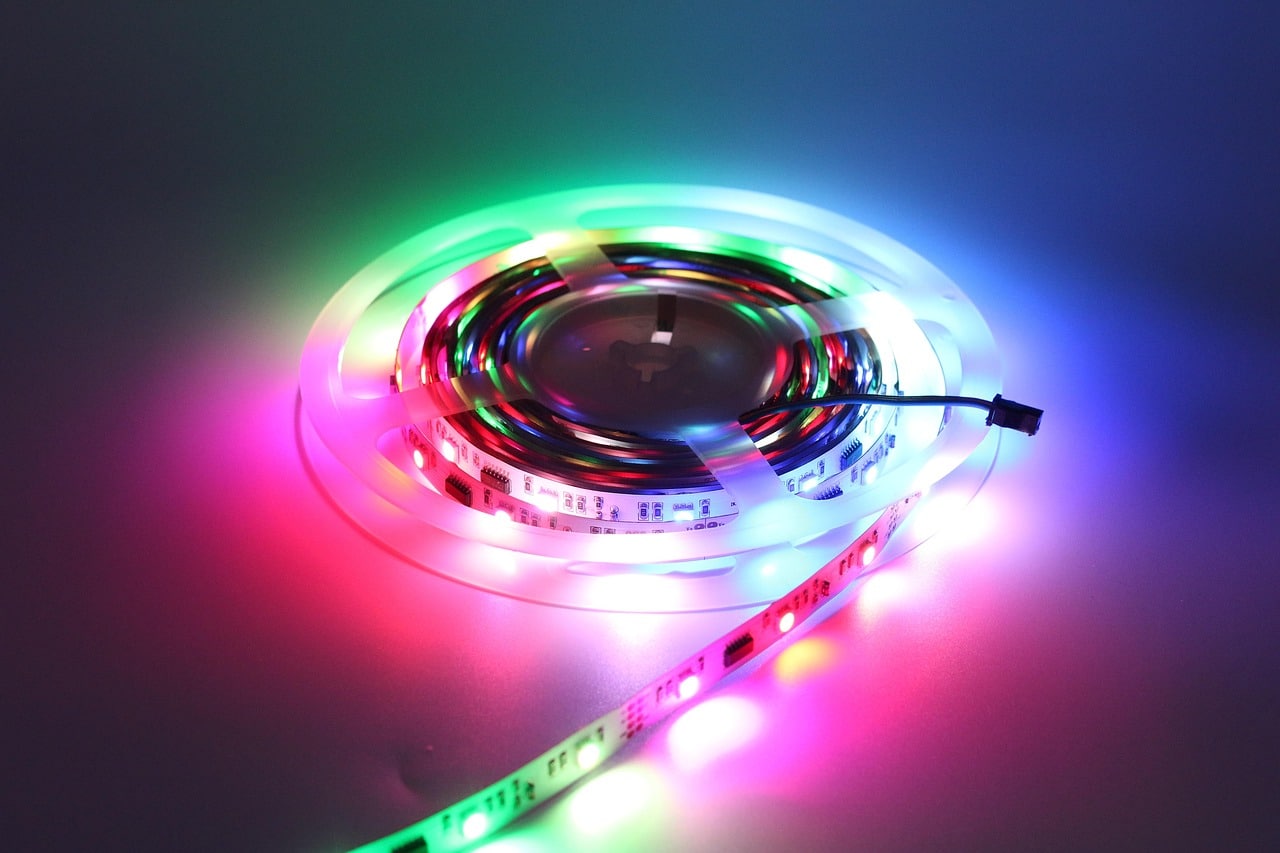
LED strip lights have become very popular lately. These flexible lights improve both looks and use in many places. Among these choices, the rgbw led strip is a big step up from old lighting. Knowing how they work and how to install them is important. This helps you make smart choices that fit your needs.
Here are some important facts about the LED strip lighting market:
Metric | Value |
|---|---|
Market size in 2021 | US$ 1454 million |
Forecasted market size in 2031 | US$ 3841 million |
Compound Annual Growth Rate (CAGR) | 15.1% |
Market share of Asia-Pacific | 40% |
Market share of Europe | 30% |
Largest product segment | 5050 (65% share) |
Largest application segment | Commercial Application |
Key Takeaways
RGBW LED strips are brighter and show white light better than regular RGB strips. This makes them great for different lighting needs.
The white LED in RGBW strips helps mix colors. This means you can get more colors and set better moods.
RGBW strips cost more and use more power. But their better brightness and color quality can make the extra cost worth it.
Installing RGBW LED strips might need careful planning. You should check if they work with your power supplies and smart home systems.
Think about what lighting you need, like how bright you want it and how accurate the colors should be. This will help you choose between RGBW and regular LED strips.
RGB vs. RGBW Strips

RGB LED Strips
RGB LED strips have three colors: red, green, and blue. These colors mix to make many different shades. You can change how bright each color is to get various looks. But, RGB strips have a hard time making real white light. They mix the three colors to create a white light. This way often makes the white look dull, which might not work for what you need.
RGBW LED Strips
RGBW LED strips improve on this. They add a white LED, which makes real, bright white light. This makes RGBW strips more useful for many tasks. For example, in businesses, you might need bright colors and good white light. The special white LED in RGBW strips helps with this, giving a brighter and truer white light than RGB strips can do.
Also, the white LED helps mix colors better. Tests show that RGBW strips mix colors better than RGB strips. This addition helps create better white tones and more soft colors when used with the RGB LEDs. Because of this, you can get a wider range of colors, including bright white and gentle shades, making RGBW strips more flexible than regular RGB options.
Advantages of RGBW LED Strips
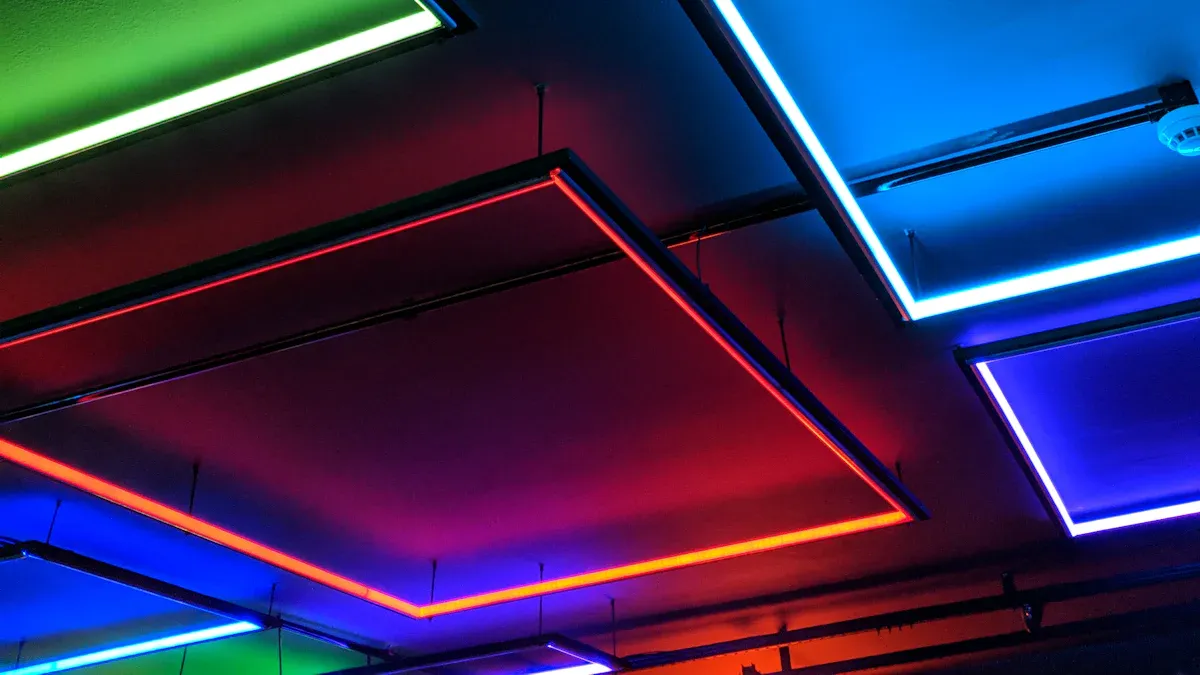
Better Color Mixing
RGBW LED strips have big benefits for mixing colors compared to regular RGB strips. They include a special white LED chip that helps make more colors. This means you can get pure white light and mix RGB colors better. Because of this, you get brighter light that works for different needs.
With RGBW strips, you can see bright colors and softer shades. The better color mixing lets you set the right mood for any event. Whether you want a warm light for a cozy night or bright colors for a fun party, RGBW strips can do it.
Improved Brightness
When it comes to brightness, RGBW LED strips are better than regular RGB ones. The special white channel in RGBW strips makes them much brighter. This means you get more light without needing extra lamps.
Here’s a comparison of key features between RGB and RGBW LED strips:
Feature | RGB LED Strips | RGBW LED Strips |
|---|---|---|
White Light Channel | No | Yes |
Brightness Levels | Limited, often requires additional light | Enhanced due to dedicated white channel |
Color Mixing Control | Less natural, simulates white light | More natural with true white light |
This table shows how RGBW strips give a more natural and brighter lighting experience. You can use them in many places, from homes to businesses, making sure your space looks great.
The flexibility of RGBW LED strips makes them perfect for many uses. You can use them at home to improve the atmosphere, in stores to show off products, or in factories for clear lighting. Here are some common uses:
Residential Settings: Improve atmosphere, task lighting, and highlight architectural features.
Commercial Applications: Show products in stores and create lively atmospheres in restaurants.
Industrial Settings: Provide clear, low-heat lighting for museums and galleries.
RGBW LED strips are becoming more popular because they help create nice moods. You can change the colors for different events, making them a great choice for any lighting project.
Comparing RGBW and Traditional LED Strips
Pros of RGBW LED Strips
RGBW LED strips have many benefits over traditional ones. First, they have an extra white LED. This makes them more flexible and improves color quality. You can get a brighter and purer white light with RGBW strips. This is better than the mixed white from RGB LEDs. Because of this, they work well for colorful lights and bright white lighting. RGBW strips can meet different lighting needs easily.
Another big plus is energy efficiency. RGBW strips use more power than traditional LED strips. However, they give better brightness and color mixing. Here’s how their power use compares:
Type of LED Strip | Power Consumption (W/m) |
|---|---|
RGBW | 18–20 |
Traditional | 4.8 – 12 |
Even though they use more power, RGBW strips create a lively atmosphere. This makes them worth the extra cost.
Cons of RGBW LED Strips
On the downside, RGBW LED strips have some issues. The biggest problem is their price. RGBW strips usually cost between $20 and $30 per meter. In contrast, traditional single-color LED strips are about $10. This higher cost can be a problem for some buyers.
Also, RGBW strips might not always be as bright as you think. Some brands, like Meross, are known to be dimmer, giving only about 800 lumens. Plus, color control can sometimes be inaccurate. Users have reported that colors may not always look the same.
Here’s a summary of the main downsides:
Disadvantage | Description |
|---|---|
Cost | The biggest drawback to RGBW LED strips is their cost. |
Brightness | Some strips, like Meross, are known to be dim, at about 800 lm. |
Color Control Accuracy | Users report that color control is not always accurate. |
Pros of Traditional LED Strips
Traditional LED strips also have their good points. They are usually cheaper, making them easy to buy for many projects. Their lower cost is attractive, especially for those on a budget.
Additionally, traditional LED strips often last longer. Most high-quality LED strips, including RGB types, can last between 30,000 and 50,000 hours. This means you can enjoy steady lighting without needing to replace them often.
Cons of Traditional LED Strips
However, traditional LED strips have some limits. One major issue is that they cannot create true white light. They depend on mixing colors, which can lead to a dull white. This can lower the overall lighting quality in your area.
Also, traditional LED strips may struggle with heat. Poor heat management can reduce light output and lifespan, especially in places with bad airflow. Other issues include:
Drawback | Description |
|---|---|
High Initial Cost | Traditional LED strips often have higher upfront costs due to advanced manufacturing technology and materials, which can be a barrier for some consumers. |
Heat Dissipation Sensitivity | Poor heat management can lead to lower light output and lifespan, especially in areas with little ventilation. |
Blue Light Hazards | Some traditional LED strips give off blue light, which can tire your eyes and disrupt sleep, posing health risks. |
Color Consistency | Low-quality traditional LED strips may show big differences in color temperature, leading to uneven lighting when using multiple strips together. |
Installation Differences
Installation Complexity
Installing RGBW LED strips can be trickier than putting up traditional LED strips. You have to think about a few things before you start. First, high-quality RGBW strips are flexible. They can bend and twist to fit different designs. This flexibility helps you create cool lighting setups that regular strips might not allow.
When you install them, pay attention to the sticky backing. Good LED strips use strong adhesives. This helps them stick well to different surfaces. A strong adhesive keeps the strip in place over time, so it won’t peel off.
Here are some important tools and skills you will need for installation:
Luz de aterrizaje LED: Pick based on your project needs (like single-color, RGB, or waterproof).
Power Supply: Match voltage and wattage (usually 12V or 24V).
Connectors: Use clip-on connectors or soldering tools to join strips.
Scissors or Utility Knife: Cut strips at the marked points.
Soldering Iron and Solder: For making manual connections.
Multimeter: Check voltage and make sure connections are right.
Double-Sided Tape or Mounting Clips: Hold the strips in place.
Compatibility Issues
When you try to use RGBW LED strips with other lighting systems, you might face some compatibility problems. Here are some things to think about:
Factor | Description |
|---|---|
Voltage Compatibility | Make sure the controller matches the LED strip voltage needs. |
Current Rating | Must handle the total current used by the LED strips. |
Connector Types | Check if connectors fit between the controller and LED strips. |
LED Type Compatibility | Some controllers may only work with certain types of LED lights. |
You need to make sure your power supply is good for the LED strips. Figure out the total wattage needed for the strips. Choosing a power supply that can handle the load is very important. If the power supply doesn’t meet the voltage and current needs, you might see dim lights or flickering. This can really affect how well your lighting system works.
RGBW LED strips also work great with popular smart home systems. They can connect easily with controllers like Amazon Alexa, Google Assistant, and Apple HomeKit. This makes it easier to control your lighting. You can manage RGBW strips using smartphone apps and voice commands, making them a flexible choice for modern homes.
In short, RGBW LED strips have many benefits compared to traditional options. They give you brighter light, better color mixing, and real white light. When picking between these two types, think about these things:
Brightness Levels: Make sure your space is bright enough.
Color Rendering Index (CRI): Check for true color display.
Kelvin Temperature: Pick the right mood for your needs.
Compatibility with Controllers: Make sure they work with smart systems.
Energy Efficiency and Longevity: Get the most from your investment and lower upkeep costs.
RGBW strips are great for bright accent lighting and useful light. Traditional RGB strips might not give the same quality of white light, which can affect your choice based on what you need. Choose carefully to make the best atmosphere in your space!
FAQ
What is the main difference between RGB and RGBW LED strips?
RGB LED strips mix red, green, and blue colors to make different shades. RGBW strips add a special white LED. This gives brighter and better white light and helps mix colors more effectively.
Are RGBW LED strips more energy-efficient than traditional LED strips?
RGBW LED strips use more power than traditional ones. But they give better brightness and color quality. This makes them a good choice for many lighting needs.
Can I use RGBW LED strips with smart home systems?
Yes! RGBW LED strips work well with popular smart home systems like Amazon Alexa, Google Assistant, and Apple HomeKit. You can easily control them using smartphone apps or voice commands.
How long do RGBW LED strips last?
High-quality RGBW LED strips usually last between 30,000 and 50,000 hours. If you install and maintain them properly, they can last longer. This way, you can enjoy bright lighting for many years.
What should I consider when installing RGBW LED strips?
When installing RGBW LED strips, check if the voltage matches, make sure the adhesive backing is strong, and use the right connectors. Think about your lighting needs and plan your layout for the best results.

